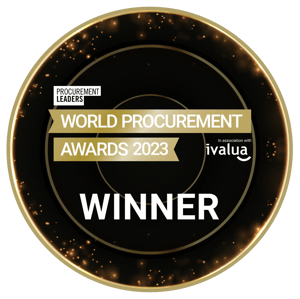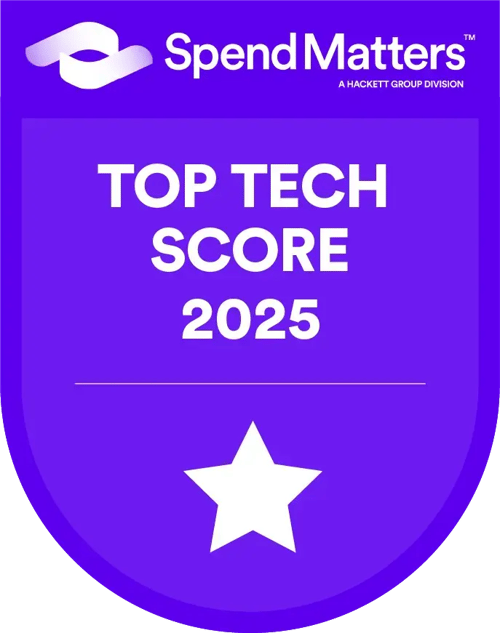The urgency for companies to reduce greenhouse gas emissions has never been greater. Today, nearly half of the largest companies have committed to cutting emissions, but many still lack a clear plan, particularly when it comes to supply chain emissions. 75% of a company’s emissions come from its supply chain, which makes the scope 3 data broad and scattered. This is where choosing the right tool and partner can make all the difference.
This blog covers the emission reduction journey of TDC NET, the largest digital infrastucture provider in Denmark, with key learnings and best practices.
Watch the full webinar on how TDC NET leverages Sievo CO2 Analytics for actionable decarbonization
What are Scope 3 Emissions?
Scope 3 emissions are all the indirect emissions generated throughout a company’s value chain, including purchased goods and services, business travel, waste management, and more. For many companies, 75% of emissions come from their supply chain, making Scope 3 a crucial, yet difficult, area to measure and reduce.
As Alex Campbell, Senior Sustainability Consultant at TDC NET, explained during a recent webinar: “Scope 3 features all of the elements that make addressing climate change tricky. It’s hard to measure, beyond your direct control, and requires changing the behavior of others.” Tackling Scope 3 requires not just the right tools, but also a clear roadmap and commitment from the entire supply chain.

TDC NET’s Roadmap to Scope 3 Emission Reductions
TDC NET’s journey toward reducing their Scope 3 emissions involved several key steps, forming a strategic roadmap that other businesses can emulate:
Sustainability Ownership
The first step was appointing a dedicated team to manage the company’s sustainability goals, ensuring that reducing emissions remained a core focus.
Baseline Calculation
Using Sievo’s procurement analytics software, TDC NET analyzed all spending data to understand what was being purchased and from whom. This data was then combined with external emissions databases to calculate the company’s carbon baseline.
Hotspot Identification
Once the baseline was set, the team identified the suppliers and categories contributing the most to emissions—referred to as “hotspots.”
Precise Supplier Emissions Collection
TDC NET began collecting accurate emissions data directly from suppliers, which allowed them to focus reduction initiatives where they would be most impactful.
Reduction Initiatives
With the data in hand, the company implemented emissions reduction programs, engaging suppliers to adopt more sustainable practices. This approach was crucial for managing their broad supply chain and ensuring continuous progress toward their goals.
How to Benchmark My Scope 3 Emissions Performance?
A clear benchmark helps you understand where you stand and what to improve. The CO₂ Benchmarking tool we developed with Deloitte reviews enterprise and supplier-related emissions and examines the sustainability maturity of your procurement activities. It provides a grounded view of your Scope 3 performance and highlights steps to strengthen your progress toward decarbonization.
The Importance of the Right CO2 Analytics Solution
TDC NET’s success can be attributed in large part to their decision to implement Sievo’s CO2 Analytics, which provided an automated, efficient solution for managing Scope 3 emissions. According to Alex Campbell,
“We were spending three months a year calculating emissions manually and nine months engaging with suppliers. With automation, we now focus on driving results, not just counting emissions.”
Here are the key features that made Sievo’s tool the right choice for TDC NET:
- Automated Data Collection: Instead of relying on spreadsheets, Sievo’s CO2 Analytics automatically collects and tracks emissions data, allowing real-time monitoring and reporting.
- Supplier Engagement: The module provided tools to engage suppliers directly, a critical component of reducing emissions in the supply chain. TDC NET could easily monitor supplier performance, implement decarbonization strategies, and collaborate on sustainability goals. As Campbell put it, “It’s not just about collecting data—it’s about working hand-in-hand with suppliers to make a real impact.”
- Customizable and Transparent Reporting: TDC NET needed a solution that could offer full traceability of the emissions data. Sievo’s tool enabled them to customize emission factors at both the supplier and product level, ensuring transparency for audits and compliance with international standards. “The transparency of the data is critical,” Campbell noted. “We can confidently show our auditors how we calculated emissions, knowing the numbers are accurate and traceable.”
- Seamless Integration: Sievo’s tool integrated smoothly with TDC NET’s existing systems, making it easier for their team to gather and analyze emissions data from procurement and capital expenditures. “The integration was smooth, and it didn’t disrupt our existing operations—a huge plus,” said Campbell.
Results: 44% Reduction in Emissions and a Clear Path to Net Zero
The decision to automate Scope 3 emissions tracking has paid off. By 2023, TDC NET had reduced its total emissions by 44% compared to a 2020 baseline. This was possible not only because of their commitment but also because they chose the right tool and partner to streamline and optimize their emissions strategy.
“This was a weight off my chest,” Campbell shared, referring to the transformation in how TDC NET managed its emissions data. “Now, instead of spending months calculating emissions, we’re focusing on making real progress and working with our suppliers to decarbonize.”
The company has set its sights on an ambitious goal of becoming net zero by 2030, and with Sievo’s CO2 Analytics module, they have a clear path to get there. “We’re well on our way to achieving net zero,” said Campbell. “Having the right partner like Sievo has made all the difference. We now have the data, the tools, and the confidence to meet our goals.”
How Your Business Can Achieve Scope 3 Emissions Reductions
If you have the commitment to reduce emissions but remain unsure of where to start, here’s a roadmap to guide your efforts:

1. Commit to Sustainability
Appoint a dedicated team or individual responsible for managing your sustainability goals and ensure they have the tools to succeed.
2. Leverage Data and Analytics
Accurately calculate your carbon baseline by combining your spend data with external emissions databases. Software like Sievo’s CO2 Analytics module can automate this process, saving time and ensuring accuracy.
3. Identify Emissions Hotspots
Use your baseline data to pinpoint the suppliers and product categories that contribute the most to your Scope 3 emissions.
4. Engage with Suppliers
Collaborate with suppliers to collect precise emissions data and work with them to implement reduction initiatives. Supplier engagement is critical to reducing supply chain emissions.
5. Make an Impact
Once you have a roadmap in place, focus on implementing initiatives that deliver tangible emissions reductions. Regularly track your progress and adjust your strategies as needed.
Conclusion: The Right Tool Makes All the Difference
TDC NET’s story highlights the importance of choosing the right partner and tool when tackling the challenge of Scope 3 emissions. By adopting Sievo’s CO2 Analytics module, they automated key processes, engaged suppliers effectively, and achieved a significant reduction in their emissions.
If your company has committed to becoming net zero by 2030 or beyond, now is the time to act. Automation, data accuracy, and supplier engagement are essential for success, and the right software solution can be a game-changer. Whether you’re just starting your decarbonization journey or looking to accelerate your efforts, remember: the first step is simply to begin.
As Alex Campbell concludes, “Don’t hesitate. The tools exist, the partners are there, and the sooner you start, the sooner you’ll see real, measurable results.”

Learn more about Sievo's CO2 Analytics Solution






